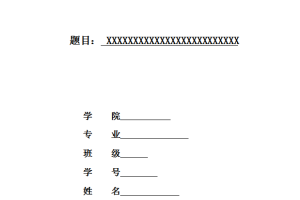贝多芬钢琴奏鸣曲《悲怆》第三乐章音乐分析
摘要:《 悲怆》奏鸣曲是贝多芬早期钢琴奏鸣曲的顶峰之作,该曲也是因为第三乐章戏剧性的优美旋律而为世人所熟悉。本文通过对该乐章整体细致的和声分析,揭示出作曲家当时的创作上具有既遵循古典风格又透漏出浪漫气质的特征;通过曲式结构分析,明晰了本曲结构既体现了回旋曲式特点,又体现了三部性结构和再现中调性统一的奏鸣曲式结构原则,此曲堪称钢琴奏鸣曲创作的典范之作。
关键词:贝多芬;《 悲怆》奏鸣曲第三乐章;和声分析;曲式分析
A Musical Analysis of the 3rd Movement of Beethoven’s C Minor Piano Sonata
Abstract: “C minor piano Rondo sonata” harmony s the peak of Beethoven’s piano sonata early work, this song is also because of the third movement dramatic melody and familiar to the world. In this paper, through analyzing the movement of the overall and detailed harmony, reveals the composer has on the creation of both follow the classical style and at the time of revealed out romantic temperament characteristics; Through formal structure analysis, clear the this structure reflected the cyclotron form features, and embodies the three structure and tonal unity in the sonata form structure principle, this piece is a piano sonata creation of apotheosis.
Key words: Beethoven; “C minor piano Rondo sonata” harmony 3rd movemen; Harmonic analysis; The buckling analysis
目 录
前言……………………………………………………………………………………1
(一)本课题的研究目的与意义 …………………………………………………1
(二)文献综述 ……………………………………………………………………1
一、和声分析 ………………………………………………………………………3
(一)呈示部分析 …………………………………………………………………3
(二)发展部分析 …………………………………………………………………6
(三)再现部及尾声分析 …………………………………………………………8
二、曲式结构分析 …………………………………………………………………12
(一)呈示部分析 ……………………………………………………………12
(二)发展部分析 ………………………………………………………………13
(三)再现部及尾声分析 ………………………………………………………14
(四)曲式结构图示………………………………………………………………15
三、结语………………………………………………………………………………16
参考文献 …………………………………………………………………………17
附录:和声注释 ……………………………………………………………………18
后记 …………………………………………………………………………………27





